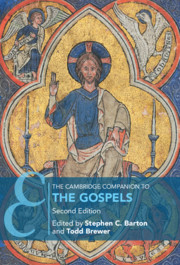Book contents
- The Cambridge Companion to the Gospels
- Cambridge Companions to Religion
- The Cambridge Companion to the Gospels
- Copyright page
- Contents
- Figures
- Contributors
- Abbreviations
- Introduction
- Part I Approaching the Gospels
- 1 What Is a Gospel?
- 2 The Fourfold Gospel
- 3 Gospel Sources and Interrelations
- 4 The Scriptural Matrix of the Gospels
- 5 The Gospels and ‘the Historical Jesus’
- 6 The Gospels and the Reader
- Part II The Gospels As Witnesses to Christ
- Part III The Afterlife of the Gospels
- Index
- Cambridge Companions to Religion (continued from page iii)
- References
6 - The Gospels and the Reader
from Part I - Approaching the Gospels
Published online by Cambridge University Press: 10 August 2021
- The Cambridge Companion to the Gospels
- Cambridge Companions to Religion
- The Cambridge Companion to the Gospels
- Copyright page
- Contents
- Figures
- Contributors
- Abbreviations
- Introduction
- Part I Approaching the Gospels
- 1 What Is a Gospel?
- 2 The Fourfold Gospel
- 3 Gospel Sources and Interrelations
- 4 The Scriptural Matrix of the Gospels
- 5 The Gospels and ‘the Historical Jesus’
- 6 The Gospels and the Reader
- Part II The Gospels As Witnesses to Christ
- Part III The Afterlife of the Gospels
- Index
- Cambridge Companions to Religion (continued from page iii)
- References
Summary
Narrates a shift in reading methods from notions of objectivity and authorial intent to a reader-oriented approach which emphasizes the reader as the subject who interprets the text. Drawing upon the philosophical hermeneutics of Paul Ricoeur and Hans-Georg Gadamer, Schneiders argues that reading scripture is an event with the potential to transform the reader through the transcendent reality mediated by the text.
Keywords
- Type
- Chapter
- Information
- The Cambridge Companion to the Gospels , pp. 112 - 134Publisher: Cambridge University PressPrint publication year: 2021

